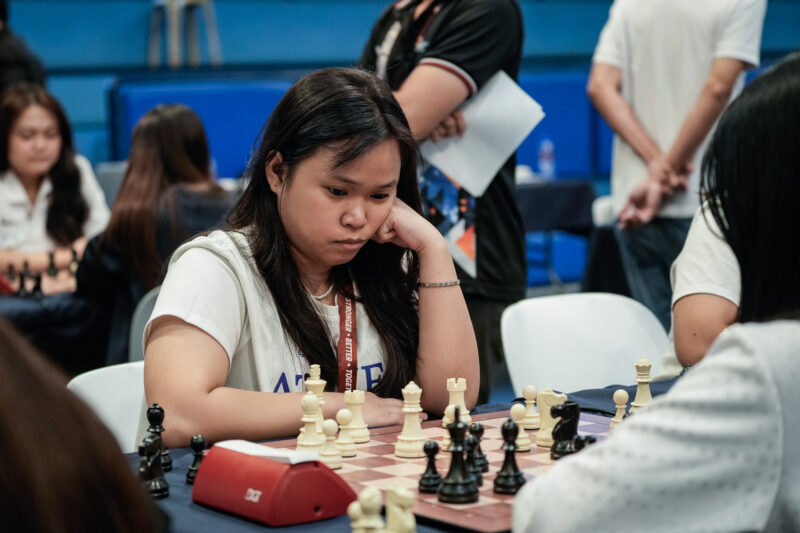In the Pearl of the Orient, the Western tongue reigns supreme. During Rizal’s time, it was Spanish. Right now, it is English. Politicians and businesspeople speak it, official documents use it, major newspapers write in it and teachers instruct with it.
It was this dominance of foreign language in the country’s political, social and economic affairs that compelled former president Manuel L. Quezon to campaign for a national language. On December 30, 1937, he chose Tagalog as the foundation of what would be known as the national “Pilipino” (which would later become “Filipino”) through Executive Order No. 134.
Three decades later, Ferdinand Marcos won the presidency. In his first inaugural speech he said, “For today, the Filipino, it seems, has lost his soul, his dignity and his courage.” He promised that “this nation can be great again,” but it would entailed the revival of the Filipino spirit.
Policy-wise, that meant promoting Filipino as co-equal of English in basic education. This gave birth to the so-called “bilingual education policy” of the 1970s, in which English was used for teaching the sciences while Filipino was the language of instruction in liberal arts classes.
Woes of the bilingual policy
Mrs. Virgina Semacio, a public school teacher in Agusan del Norte, used to follow this bilingual policy for teaching Grades 1 and 2. However, she found that using strictly Filipino and English was inherently ineffectual. Speaking in a mix of Bisaya and Filipino, she said, “Bisaya was often mixed into teaching because students did not understand.”
Semacio mentioned a student she taught long before. “At first, he did not speak or participate in class,” Semacio recalled. Eventually, he stopped coming to class entirely.
Semacio’s situation demonstrates the inadequacy of the bilingual policy—a policy that outlasted the Marcos regime and remained the status quo for nearly 40 years.
Though the “national language” of Filipino was a language of instruction, comprehension remained a concern. A 2008 literacy survey reported that five million Filipinos can neither read nor write and nine million cannot compute. Of those who can read, nearly 20 million cannot understand what they read.
The use of mother tongue
“For most of our students and learners, Filipino—which is largely based on Tagalog—and English are foreign languages to them,” explains Elvin Uy, the K-12 coordinator of the Department of Education (DepEd).
Uy explains that many children, especially from ages five to nine, do not use English, Tagalog or Filipino as their first languages.
“That’s the reason why [DepEd] felt using English and Filipino solely as the medium of instruction at early grade levels was insufficient. It alienated a substantial number of learners who do not use either language as their first at home,” Uy adds.
DepEd’s solution was to implement the so-called mother tongue-based multilingual education (MTB-MLE) system. From kindergarten to grade three, students will be taught using the language of their region. Then, Filipino and English will be introduced in the following grade levels.
The premise of the policy is simple: Learning is faster for children when the languages used in the classroom and at home are the same. “You want people to learn through the language that they understand,” Uy says.
Nothing new
However, this push for the use of mother tongue is nothing new.
“English… is not an effective medium of instruction,” says a 1951 United Nations Educational, Scientific and Cultural Organization (Unesco) report on Philippine education. “Available evidence… indicates that the use of the vernacular as a medium of instruction in the lower grades will contribute a long way to the community.”
The Unesco recommendation would be perennially repeated for the following 60 years. It was cited in the report of the 1991 Congressional Commission on Education, as well as the 1998 Philippine Education Sector Study by the World Bank and the Asian Development Bank. It was used again in the report of the 2000 Presidential Commission on Educational Reform and again in the National Learning Strategy of the 2008 Department of Education Basic Education Sector Reform Agenda.
Yet, it was only in May of 2013 that mother tongue-based education became official, legal and binding, after President Benigno “Noynoy” Aquino III signed K-12 into law. Why did this take so long to happen? Ask the policymakers.
Resistance
On August 24, 2011, the RH bill deliberations in the House of Representatives were temporarily halted because of an angry exchange between Leyte Representative Sergio Apostol and Akbayan Representative Arlene “Kaka” Bag-ao.
“Ako po ay naniniwala na tayo po ay dapat linangin sa ating sariling wika (I believe we should be formed through our own language),” Bag-ao said, insisting on speaking in Filipino. Apostol was fuming, arguing that, “If she wants to speak in Tagalog, then there should be an interpreter.”
The case of Apostol reflects the general attitude of policymakers towards language, an obstacle that MTB-MLE must overcome in order to gain universal approval.
“If you look at the Gloria Macapagal-Arroyo years, there was a strong emphasis on the English proficiency and competency. In fact, the recommendation to shift to mother tongue was given as early as 2005 but there was a very big effort to fight it,” Uy says.
Former President Arroyo signed Executive Order No. 210, s. 2003, which made English the medium of instruction in public schools. In 2009, this policy nearly became a law when 213 congressmen supported House Bill No. 5169, “An Act to Strengthen and Enhance the Use of English as Medium of Instruction in Philippine Schools,” authored by Arroyo ally and Cebu Representative Eduardo Gullas.
Language: An issue of identity
Jethro Tenorio of Ateneo’s Filipino Department believes that resistance to policies such as the development of national language and mother tongue-based education can be attributed to false dichotomies.
“Kasi nakikita natin na sa simplistikong paraan, kapag pro-Filipino ka, against English ka (It is because we view it in a simplistic way, that when you are pro-Filipino, you are against English),” Tenorio says in Filipino. “Pwede naman kasing pro-English at pro-Filipino (It is possible to be both pro-English and pro-Filipino),” he adds. And, by extension, Tenorio argues that one can support MTB-MLE while being both pro-English and pro-Filipino.
He agrees that English is there out of economic necessity, but insists that the use of language must also reflect issues of identity. Tenorio explains that self-actualization goes beyond gaining material wealth. There is always a need to have a better understanding of one’s self in the context of his society, he says, and this is true even if we now live in a “borderless world.”
“Kung makikisangkot tayo sa kalakaran ng globalisadong mundo, dapat malinaw kung ano ang ‘sarili’ na isinasangkot natin (If we will engage in the workings of a globalized world, it is important that the ‘self’ we put forward is clear),” Tenorio adds. Hence, the Filipino language is used to sustain the concept of a nation. This along with the use of mother tongue will reinforce a national identity that respects and encourages diversity.
The future of education
Meanwhile, Semacio has been teaching in Bisaya for two years now. She has observed that students are more actively reciting and that comprehension test scores are improving. And the dropout student she mentioned? “He is now back and is very interactive,” Mrs. Semacio reveals.
Tenorio, on the other hand, is happily waiting for the students he will handle 15 years from now—the first students under the MTB-MLE system.
“Gusto kong mangyari, kapag nagkolehiyo na itong mga magma-mother tongue, ‘yung hindi na sila mahihiya na magsabi na, ‘Ito po, natuto po akong mag-isip sa Bisaya,’ (What I want is that when students who were schooled in their mother tongue enter college, they will not be ashamed to say, ‘I learned to think in Bisaya’),” Tenorio says. He wants the students to see the use of English and Filipino as a challenge to find similarities on the worldview that each language represents.
After all, Tenorio concludes, “Ang isang wika ay hindi umiiral bilang kontra sa ibang wika (A language does not exist to counter other languages).” All languages exist to share something—a common understanding, a similar vision, a shared experience.



